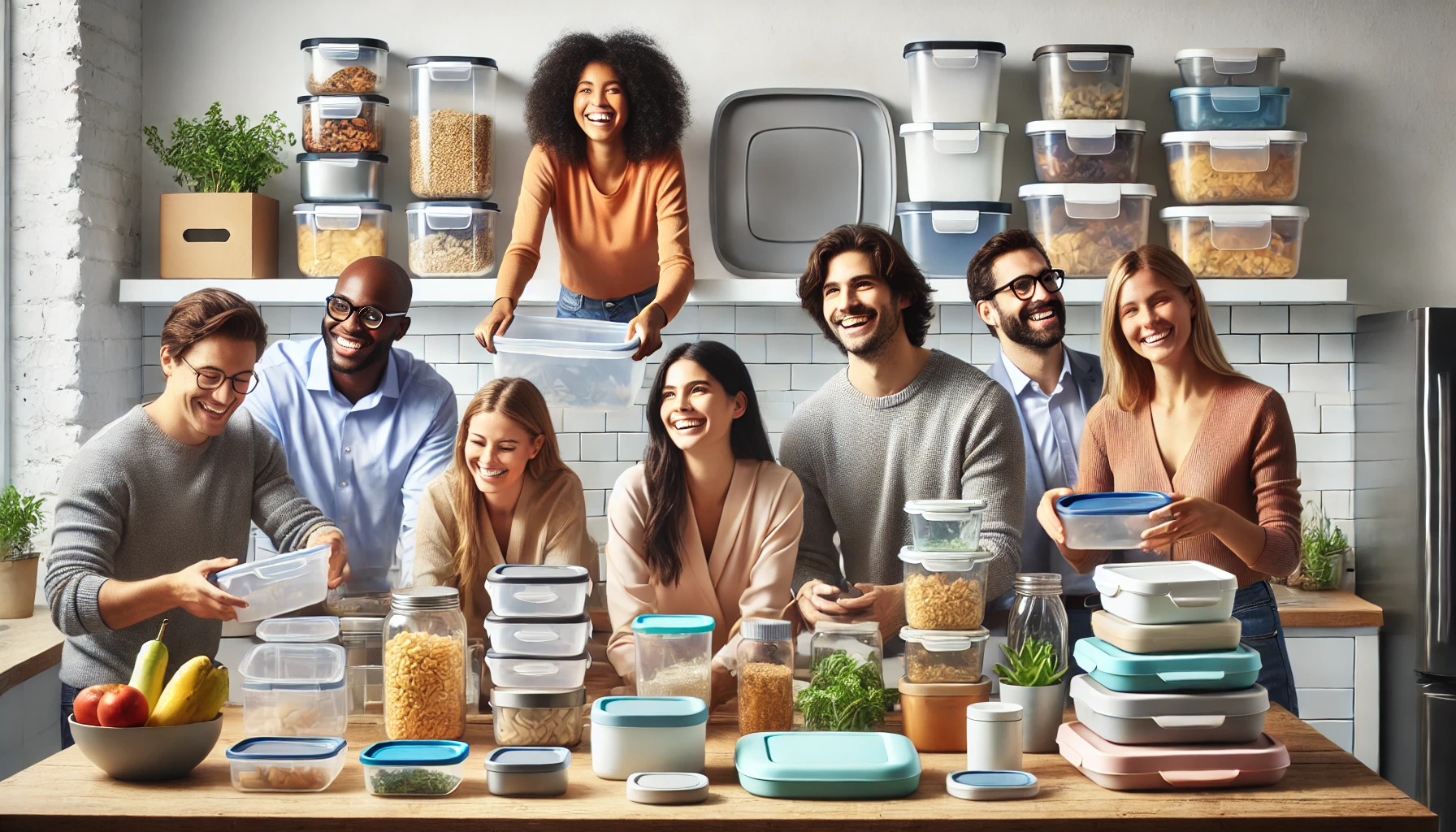Introduction
Food container lids are an essential part of any kitchen. They ensure that food stays fresh, prevent spills, and help organize storage. Whether you are meal prepping for the week or storing leftovers, having the right lids can make all the difference. In this article, we will explore various types of food container lids, their uses, and how to select the best options for your needs. From food storage lids to silicone container lids, we will cover everything in-depth to help you make an informed decision.
What Are Food Container Lids?
Food container lids are the covers used to seal food storage containers. These lids are available in various materials such as plastic, silicone, and glass. They are designed to keep food safe from contamination and maintain its freshness. Some lids, like airtight lids for containers, offer an extra layer of protection by preventing air and moisture from entering.
Types of Food Container Lids
When choosing food container lids, it’s essential to understand the different types available. Here are some popular options:
1. Food Storage Lids
These are versatile lids that fit most food storage containers. They are ideal for organizing leftovers, meal prep, or pantry items.
2. Container Covers
These simple covers are often made of plastic or silicone and are designed to protect food from dust and moisture. They are not always airtight but are convenient for short-term storage.
3. Meal Prep Container Lids
Specifically designed for meal prep containers, these lids are usually airtight and leak-proof, making them perfect for storing meals on the go.
4. Airtight Lids for Containers
Airtight lids create a seal that prevents air from entering, keeping food fresh for a longer time. These are ideal for items like soups, salads, and perishable foods.
5. Reusable Food Lids
Eco-friendly and sustainable, reusable food lids are often made of silicone or other durable materials. They are a great choice for reducing waste.
6. Silicone Container Lids
Flexible and stretchable, silicone lids can fit over containers of various shapes and sizes. They are microwave-safe and dishwasher-friendly.
7. Plastic Food Lids
Lightweight and affordable, plastic lids are common in many households. They are suitable for everyday use but may not be as durable as silicone or glass options.
8. Sealable Container Tops
These lids provide a secure fit, ensuring that food stays sealed and fresh. They are commonly used for snacks, sauces, and beverages.
Factors to Consider When Choosing Food Container Lids

Selecting the right food container lid involves considering several factors. Here’s what you need to keep in mind:
1. Material
The material of the lid affects its durability, usability, and safety. Silicone and glass are considered safer for microwaving, while plastic is lightweight and convenient.
2. Sealability
If you store liquids or want to keep food fresh for longer, opt for lids with airtight seals. These lids prevent spills and keep moisture out.
3. Size and Compatibility
Ensure the lid fits your containers perfectly. Some lids are universal, while others are specific to certain container brands.
4. Durability
Reusable and dishwasher-safe lids, such as silicone container lids, are more durable and eco-friendly than disposable plastic lids.
5. Usability
Look for lids that are easy to open, close, and clean. This enhances their usability for daily tasks.
Benefits of High-Quality Food Container Lids
Using high-quality food container lids offers several advantages:
Keeps Food Fresh: Airtight lids help preserve food’s taste and texture.
Prevents Contamination: Lids protect food from dust, bacteria, and odors.
Reduces Waste: Reusable lids minimize the need for single-use plastic.
Saves Space: Stackable lids and containers optimize kitchen storage.
Convenience: Leak-proof lids are perfect for travel and on-the-go meals.
Maintenance Tips for Food Container Lids
Proper care can extend the life of your food container lids. Here are some tips:
1. Clean Regularly: Wash lids with warm, soapy water or in the dishwasher.
2. Avoid High Heat: Keep plastic lids away from high temperatures to prevent warping.
3. Inspect for Damage: Check for cracks or wear and replace damaged lids promptly.
4. Store Properly: Organize lids in a drawer or rack to avoid misplacing them.
Why Silicone Container Lids Are Gaining Popularity
Silicone container lids are becoming a popular choice due to their flexibility, durability, and eco-friendliness. Unlike plastic lids, silicone lids are free of harmful chemicals and can withstand high temperatures. They are perfect for those looking to reduce their environmental impact while maintaining convenience.
Conclusion
Food container lids are a kitchen essential, offering practicality and convenience. From food storage lids to reusable food lids, the market offers a variety of options to suit every need. By understanding the types, materials, and benefits of these lids, you can make a smart choice for your home. Opt for durable and eco-friendly options like silicone container lids to enhance your storage experience while minimizing waste.
FAQs
1. What are the best food container lids for meal prep?
Meal prep container lids with airtight and leak-proof seals are ideal for storing pre-prepared meals.
2. Are silicone container lids microwave-safe?
Yes, silicone lids are heat-resistant and safe for use in the microwave.
3. How do I clean food container lids?
Wash them with warm, soapy water or place them in the dishwasher if they are dishwasher-safe.
4. Can I use reusable food lids for all containers?
Yes, most reusable food lids are stretchable and can fit containers of various sizes and shapes.
5. Are plastic food lids safe for hot food?
Plastic lids can warp or release chemicals when exposed to high heat, so they are not recommended for hot food storage.
By following this guide, you can make an informed choice and keep your food fresh, safe, and well-organized.

